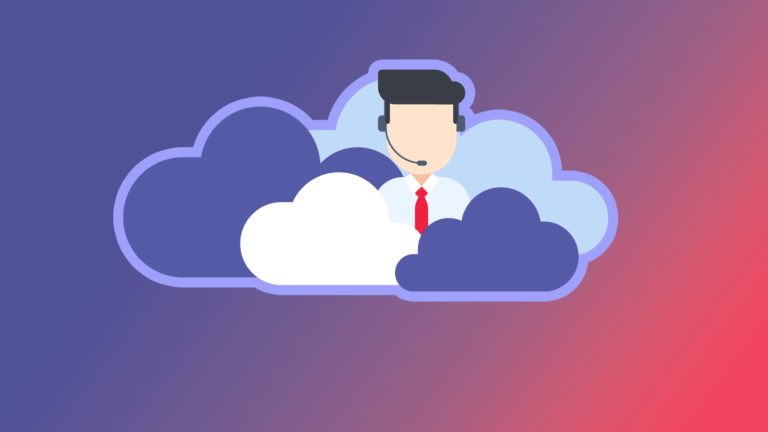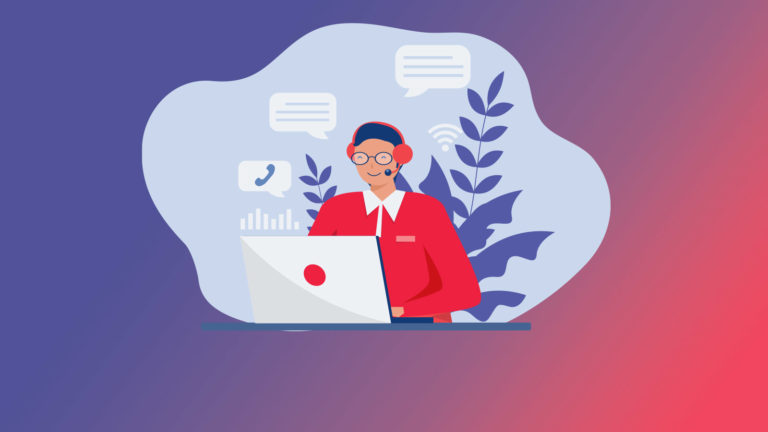“This call may be monitored or recorded for quality assurance purposes” is something we’ve all heard on the phone when dialing in with a company’s customer service department. But what does this sentence mean? What are they recording and how are they using it? And what are the legal implications of it?
WHAT IS CALL CENTER RECORDING SOFTWARE?
Call center recording is the process of recording inbound and/or outbound calls that a call center receives. This is often done through specialized call center recording software attached to your phone system that is designed to record the details of the call. Real time recordings are made using a call recording feature during a call and these recorded files are often stored within the databases of the call center software after a call ends. Often, after a call is recorded, the system automatically stores calls within a database that allow managers to view later.
Having a call recording feature to record calls and store calls in your contact center can be a powerful tool, providing great benefits. However, there are significant consequences if it is not done in compliance with all relevant call recording laws and regulations. Failing to be compliant can lead to fines and legal action.
THE BENEFITS OF CALL CENTER RECORDING SOFTWARE
Implementing call recording in your phone system provides useful tools and opens up the doors to many possibilities for your contact center. Here are some benefits from implementing proper, compliant call recording in your contact center.
QUALITY ASSURANCE
One of the greatest benefits from implementing call recording is quality assurance. Quality assurance in the call center ensures that customers experiences with your contact center are excellent and consistent. Call recordings and analytics can be used by call center supervisors or quality management teams to gain insight on customer interactions with agents. Combined with text analytics and speech analytics, call recording can help supervisors pinpoint customers’ needs and identify areas that need to be addressed for agent training purposes. Supervisors and quality management teams can listen to the interaction between an agent and a customer to identify key areas where the agent may need improvement. Plans can be created by supervisors to improve communication skills or product training with these insights and analytics into agent interactions. Using call recordings, text analytics, and speech analytics for quality monitoring and quality management ensures that your contact center is building powerful customer relationships.
Read more about quality assurance here.
TRAINING
Utilizing call recording data, speech analytics, and text analytics can improve customer satisfaction and target specific caller needs by allowing call center managers and admins to use them for agent training purposes. By using data on inbound calls and outbound calls from a call recording system, admins and supervisors can pinpoint specific issues within phone conversations and address these issues when training people and team members for future phone conversations with callers. Through training, coaching staff, providing evaluations, and educating sales teams, you can improve agent performance and empower them. Refined training and agent empowerment is necessary for businesses of all sizes to provide a next level customer experience.
LEGALITY
Call recording, while providing benefits in quality monitoring and training for agents, is often complicated and controversial. There are a number of laws and regulations depending on the federal or state level that contact centers must comply with to ensure that call recording practices meet industry and federal standards.
CONSENT
One possible area of legal regulation for call recording has to do with consent. Federal law requires on-party consent, meaning you can record a phone call or conversation as long as you are a party in the conversation. If you are not a participant in the conversation and would like to record it, you need at least one party’s consent and you need to give them full knowledge that the interaction will be recorded. The law in most states reflect the federal law, however, some states require consent from all parties for call recording. States like California and Maryland require the consent of all parties for call recording purposes.
Read more about federal compliance laws here.
DATA PRIVACY AND SECURITY
Sensitive information is often passed in calls, including customer’s addresses, payment information, and social security number. It is necessary for this important information to be protected during an interaction and during any recordings that may be captured. There are many federal and industry regulations for the purpose of protecting sensitive data. Examples include PCI, which dictates regulations on credit card information, and HIPAA, which regulates the passing of healthcare information.
Read more about how to establish comprehensive compliance in your call center.
WHAT TO LOOK FOR IN CALL RECORDING SOFTWARE
While call recording software is important for your call center solution, there are key features that all call recording software must have for full functionality within any call center.
ADVANCED CALL CENTER FEATURES
Call recording features would be useless without the necessary advanced call center features that are needed to facilitate a phone system. Some call center features that are required in call center software in the modern day include interactive voice response (IVR), automated call distributor (ACD), computer telephony integration, predictive dialers, and power dialers. Interactive voice response (IVR), ACD, and power dialers can be used in your call center to automate and streamline the caller experience.
Read about what Bright Pattern has to offer here.
OMNICHANNEL
Contact centers have moved beyond the phone. Sales teams, support teams, and customer service teams are all using different channels now to connect with customers. Businesses of all sizes are now making the move toward including other channels, like phone calls, sms/text, mobile apps, chat, and social media. Recording information from all of these channels is a daunting task that most call center software vendors fail to address.
On an omnichannel system, all of these interactions can exist in a single system and interactions on any channel can be recorded. This gives callers and contact centers a seamless experience that improves the experience for both the agents and customers. An interaction that starts on a mobile app can be handed off across channels to a phone agent, which can then be carried over to a text message conversation, all while the call center agent has the full context of the conversation. Now that most customers are communicating on multiple channels beyond voice, it is important that call recording capabilities be extended to these other non-voice channels too.
Omnichannel is the future of contact centers. Read more about omnichannel here.
CRM INTEGRATION
One of the key features that every call center solution must have is CRM integration. CRMs allow you maintain a system of record for interactions and store customer data that when coupled with your contact center platform provides a more personalized customer experience. Some popular CRMs that could be integrated with your call center systems include Microsoft Dynamics 365, Salesforce, Oracle, ServiceNow, and Zendesk. CRMs are essential tools in the customer support and customer service industry, and are a great way to ensure that your call center is building strong customer relationships.
See what CRMs Bright Pattern integrates with here.
THE BRIGHT PATTERN SOLUTION
Call recording software is just one of the features Bright Pattern’s contact center solution offers. Along with call recording and recording of any interaction on any channel, Bright Pattern offers automated call distribution (ACD), interactive voice response (IVR), predictive dialers, and more.
Bright Pattern’s call center software is fully omnichannel, supporting seamless conversations across all channels, all in one, easy-to-use, unified agent desktop. Our true omnichannel capabilities allow customers to communicate with you on any channel, including text message, chat, social media, mobile phone, mobile app, voicemail, email, and more.
Bright Pattern is capable of integrating with your existing CRM system or any major third-party CRM. Some major CRMs Bright Pattern’s contact center software integrates with include Microsoft Dynamics 365, Salesforce, Oracle, ServiceNow, and Zendesk. This allows companies of all sizes to closely track the customer on every step of the customer journey, ensuring that your sales team, support team, or service teams are able to close the deal and provide a great customer experience at every step.
On top of all this, Bright Pattern provides a dynamic customer journey builder with robust APIs. Tailor our flexible and powerful APIs to suit your specific business situation, to give the most personalized customer experience possible.
Whether you’re a sales team looking to reach more customers through channels like email and mobile apps, or an outbound contact center making sales calls, Bright Pattern’s contact center software is easy to setup and can be tailored for your situation.
About the author:
Having spent over 20 years selling technology and services to companies like Goldman Sachs, Dell EMC, PricewaterhouseCoopers, and more, he is passionate about helping organizations achieve desired business outcomes with cutting-edge technology and strategy. Certified in Cloud Economics and ROI through AWS and having successful stints at Interactive Intelligence and Genesys, Peter brings a unique perspective to service-based companies that are striving to move away from legacy technology infrastructure and processes toward a true omnichannel CX model.



